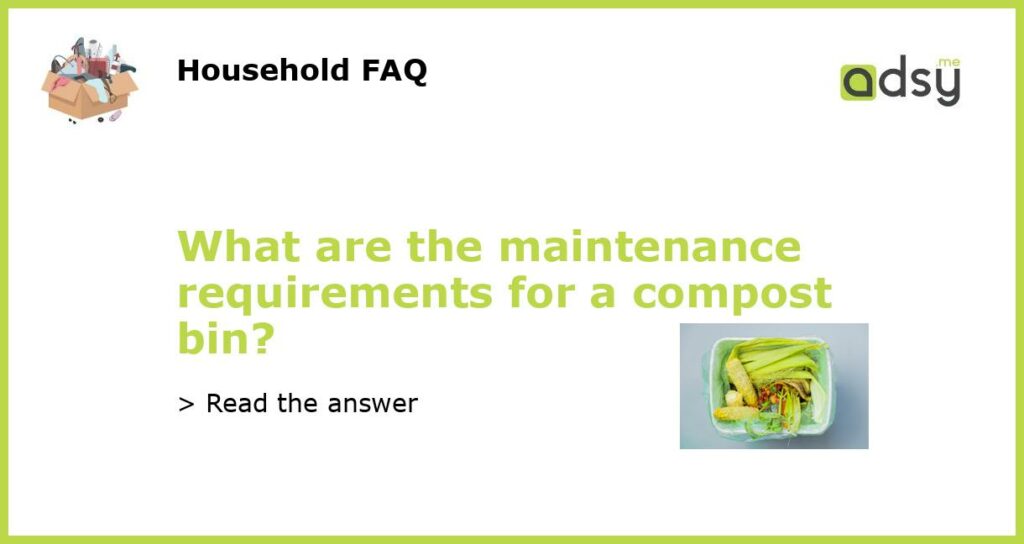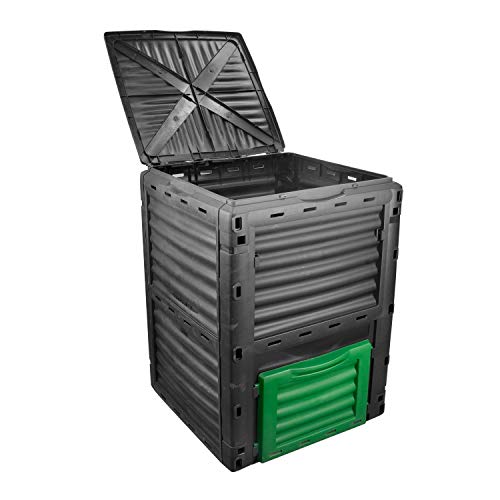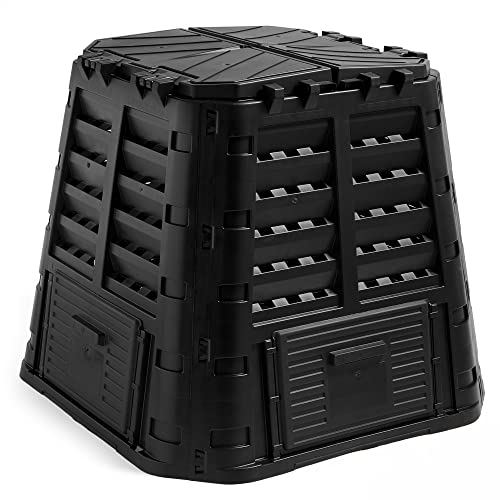Maintenance Requirements for Compost Bin
If you’ve decided to start composting at home, congratulations! Composting can drastically reduce the amount of waste you send to the landfill and provide a valuable source of nutrients for your plants. However, to keep your compost bin functioning properly, it’s essential to carry out maintenance activities regularly. Here are some of the maintenance requirements for a compost bin:
Monitor Moisture Levels
One of the most critical maintenance requirements for your compost bin is to monitor moisture levels frequently. The ideal moisture content for a compost pile is around 50%, meaning it should feel moist to the touch without being sopping wet or bone dry. If the pile becomes too wet, it can reduce airflow and encourage the growth of anaerobic bacteria that produce unpleasant odors. On the other hand, if it becomes too dry, it may slow down or even stop the composting process altogether. To check moisture levels, grab a handful of compost and squeeze it firmly. If it releases a few drops of water, it’s at the right moisture level.
Aerate the Compost Pile
To keep the composting process going, it’s essential to aerate the pile regularly. This means turning the pile to provide oxygen to the microorganisms breaking down your compost. Aeration helps to prevent unpleasant odors, speed up the decomposition process, and ensure that the compost has uniform texture and moisture. You can use a pitchfork, garden fork, or compost turning tool to mix everything together and add air to the pile. How often you need to aerate the pile depends on the type of compost bin you have and how quickly you want the compost to be ready, but aim for once a week.
Check for Pest Infestations
As your compost pile contains organic matter, it can attract pests such as rodents, flies, or ants. To check for pest infestations, look for evidence of chewed-up food scraps, holes in the pile, or droppings. If you discover any, consider investing in a pest-proof compost bin or take steps like burying food scraps, covering the pile with a secure lid, or using a natural pest repellent product. Pests can quickly turn a compost pile into a problem, so it’s essential to keep an eye out for them.
Harvest and Store Compost Correctly
When the compost reaches the desired texture and color and has cooled off, it’s time to harvest it. Use a compost screen or sifting tool to remove any large debris from the finished compost. Transfer the finished compost to a storage container, such as a plastic bin or a burlap sack. Store the container in a cool, dry place away from direct sunlight until you’re ready to use the compost in your garden or potted plants.
A well-maintained compost bin can provide valuable fertilizer for your plants and help reduce your environmental impact. Regularly monitor moisture levels, aerate the pile, watch out for pest infestations, and harvest your compost correctly, and you’ll have a successful composting experience.






